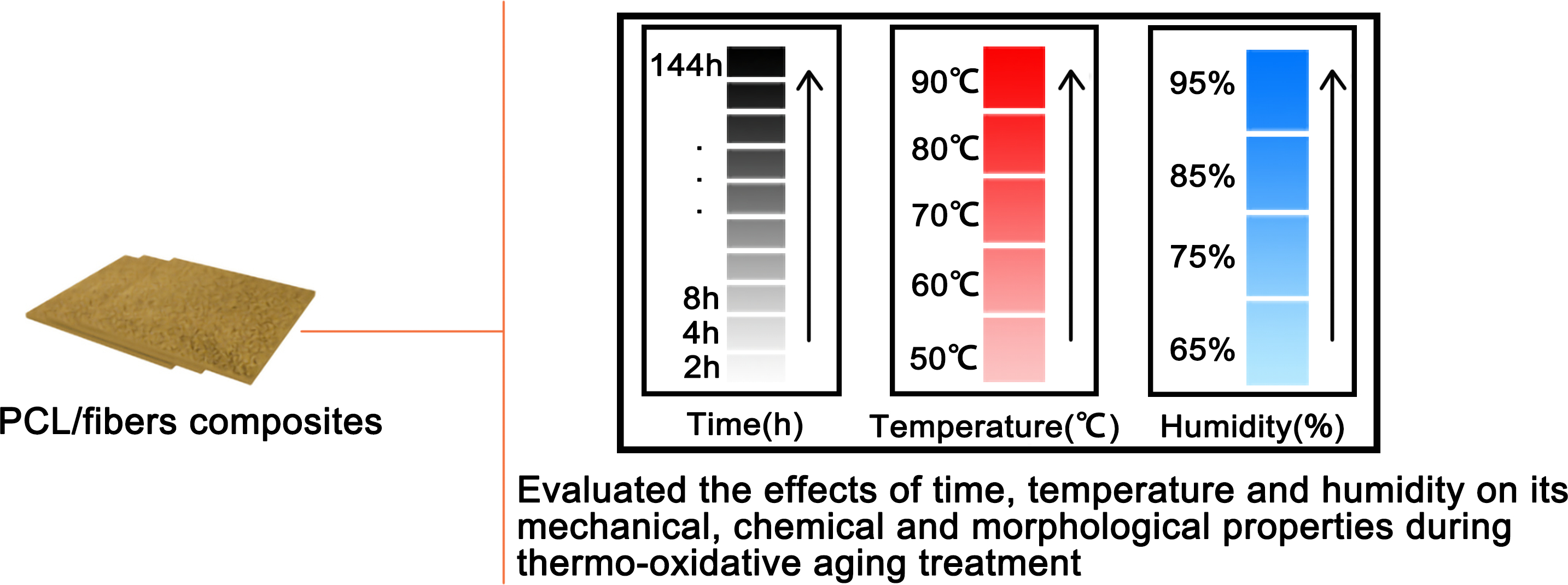 Open Access
Open Access
ARTICLE
The Accelerated Thermo-Oxidative Aging Characteristics of Wood Fiber/Polycaprolactone Composite: Effect of Temperature, Humidity and Time
Central South University of Forestry and Technology, Changsha, 410004, China
* Corresponding Author: Xingong Li. Email:
Journal of Renewable Materials 2021, 9(12), 2209-2222. https://doi.org/10.32604/jrm.2021.015506
Received 23 December 2020; Accepted 25 February 2021; Issue published 22 June 2021
Abstract
This study investigated the characteristics of wood fiber/polycaprolactone composite after an artificial accelerated thermo-oxidative aging treatment. The effect of time, temperature and humidity during the treatment on their mechanical, chemical and morphology properties were evaluated. The composite was prepared from melted wood fibers and modified polycaprolactone by a molding process. A temperature and humidity controllable test chamber was used for the thermo-oxidative aging of the composite. The thermo-oxidative aging caused surface of the composite to be much more rougher and even a few cracks and holes appeared on it. According to the spectra of Fourier Transform Infrared (FTIR) and Gel Permeation Chromatography (GPC), C=O in the molecular chain of polycaprolactone was hydrolyzed and C–O was broken after the aging treatment, which resulted in a reduction in average molecular weight of the composite. Moreover, results showed that the mechanical strength decreased a lot with the increase in time, temperature and humidity, and the effect of temperature and humidity was more significant compared with that of time. Controlling the temperature and humidity during thermo-oxidative aging treatment could accelerate the aging of composite, which provided a quick and effective method for evaluating the aging resistance of the composite.Graphic Abstract

Keywords
Cite This Article
 Copyright © 2021 The Author(s). Published by Tech Science Press.
Copyright © 2021 The Author(s). Published by Tech Science Press.This work is licensed under a Creative Commons Attribution 4.0 International License , which permits unrestricted use, distribution, and reproduction in any medium, provided the original work is properly cited.


 Submit a Paper
Submit a Paper Propose a Special lssue
Propose a Special lssue View Full Text
View Full Text Download PDF
Download PDF Downloads
Downloads
 Citation Tools
Citation Tools